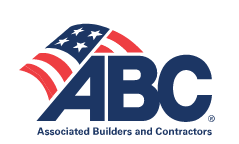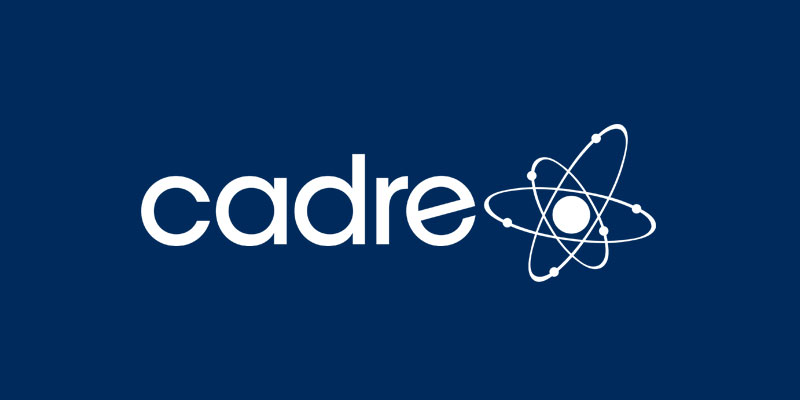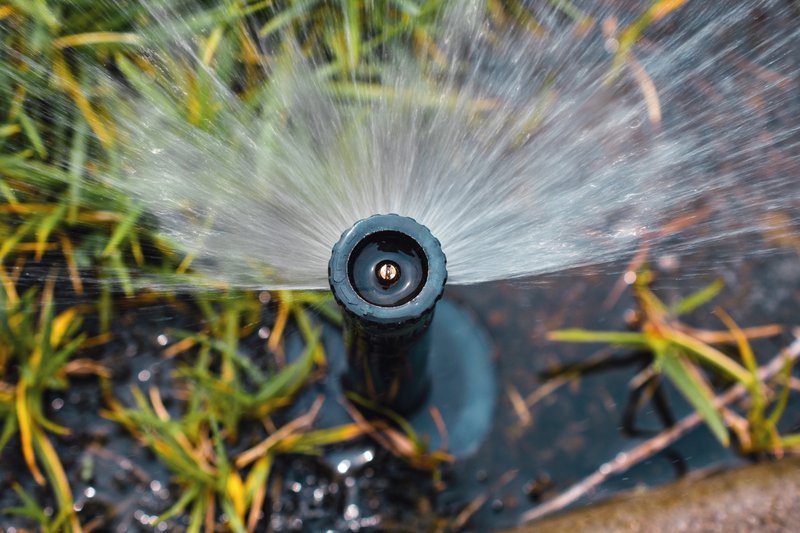
Irrigation System Maintenance 101
Your irrigation system deserves a bit of attention.
With the D.C. Metro Area’s notoriously hot and humid summers, proper watering is essential to maintaining the lush beauty of your lawn and garden. A properly installed and maintained irrigation system delivers water to the right place, in the right amount, at the right time.
Rossen Landscape’s irrigation specialists are certified in the design, installation and maintenance of irrigation systems year-round, from spring start-up and inspection to winterization and a seasonal adjustment program for the months in between.
Well-maintained irrigation systems not only last longer, they’re better for the environment and are more cost-effective. Systems that received routine maintenance use up to 15 percent less water.
When working with a professional landscape company, consider the following best practices for irrigation system maintenance.
Spring Maintenance
- Start-Up Inspection
Winter can be harsh on your landscape, including your irrigation system. At the start of the warmer season, an inspection will ensure that the system is in proper working order. This includes checking the system controls and settings for accuracy, a visual inspection of the sprinkler heads, and testing of individual zones to maintain efficient operation.
- Flush the System
Flushing the system at the beginning of the season pushes out any debris, dust or dirt that may have built up in the pipes over the winter. This simply involves turning on the water system and running it until everything is clear.
- Backflow Testing
When water moves into an irrigation supply instead of out of it, chemicals and pests can be introduced into the water line, otherwise known as backflow. This often is caused by back siphonage, a scenario in which water is pulled backward due to a decrease in pressure in the supply end of the water system. To prevent this occurrence, a landscape professional performs a test to show that a system’s backflow preventer is working properly.
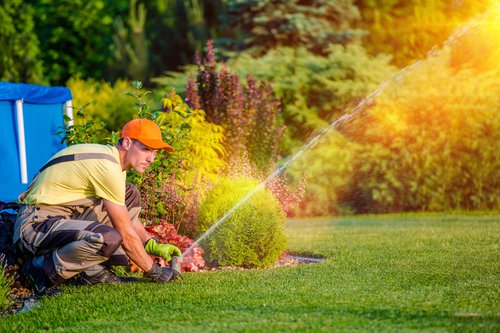
Summer Maintenance
- Regular Check-Ups
Over time, sprinkler heads could become misaligned or hoses could spring leaks, leading to dead spots. In addition, changes in water pressure could indicate a blockage or crack in the pipes. Routine summer check-ups prevent any number of issues from popping up as the season goes on.
- Change the Schedule
Running sprinklers on a schedule that doesn’t account for the season, weather, soil moisture or other important factors isn’t good for your irrigation system, your plants, or the environment. Ensure your system is scheduled by a professional and accounts for environmental factors. Better yet, make sure it features sensors to indicate when it should shut off, like during rainfall.
- Check Sprinkler Heads
Even small clumps of dirt or grass can clog up sprinkler heads and impact an irrigation system. Routinely check all sprinkler heads to prevent any blockages. In addition, since the heads can be knocked around by lawn mowers, foot traffic, animals, or even strong gusts of wind, it’s important to maintain proper sprinkler head angles.
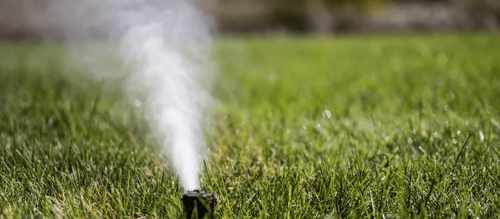
Fall Maintenance
- Winterization
Just as other portions of your landscape need to be prepped for winter, it’s important to do the same for an irrigation system. Water expands when it freezes, so any water left in irrigation pipes in the winter could cause serious damage. To prepare for these conditions, a sprinkler system should be drained with pressurized air blown through each zone. Afterward, cover sprinkler heads with a protective covering to prevent snow or ice from seeping in.
We’d love to help you manage your lawn and landscape with a professionally installed and maintained irrigation system. To learn more about our design, installation and maintenance services, click here or contact us.


